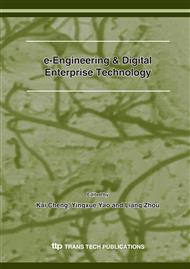p.850
p.855
p.860
p.864
p.869
p.874
p.879
p.884
p.889
State Recognition Technology and Application on Milling Tool Wear
Abstract:
A new method of state recognition of milling tool wear was presented based on time series analysis and fuzzy cluster analysis. After calculating, verifying liberation signal of tool state, and analyzing cutoff property, trailing property, periodicity of the sample autocorrelation function and partial autocorrelation function as well as estimating parameter of model. It can be decided that dynamic data serial is suit AR(p) (autoregression) model. Taking p equal to 12 as a feature vector extraction, based on the fuzzy cluster analysis the similarity relation between the feature vector of the tool working state and the sample feature vector was obtained. Working state of tool wear was determined according to the similarity relation of feature vector. This method was used to recognize initial wear state, normal wear state and acute wear state of milling tool. The result indicates that this method of tool wear recognition based on time series analysis and fuzzy cluster is effective.
Info:
Periodical:
Pages:
869-873
Citation:
Online since:
December 2007
Authors:
Keywords:
Price:
Сopyright:
© 2008 Trans Tech Publications Ltd. All Rights Reserved
Share:
Citation:


